We received the call to practice for the well-being and long life of our lama. He had come home from the hospital refusing further care and was taking only small amounts of water as he began the transition from this life. On 24 October 2023, the great and beloved Lama Tsering Wangdu Rinpoche, Chöd master and lineage holder of Padampa Sangye’s Pacification of Suffering (Zhije) Tradition, numerous Chöd lineages, and the Longchen Nyingthig, entered into parinirvana.
At his residence in Vancouver, Washington, where Rinpoche had lived and taught over the last years, an assembly of family members and students had been gathering daily to practice during this time. They came to perform Rinpoche’s heart practice of Chöd,* which is a visualization practice of offering one’s physical body as a feast to be consumed by a host of guests. These guests could be one’s esteemed teachers and heroes but also one’s demons, or most difficult obstacles. The method, formulated by the Tibetan yogini and lama Machig Labdrön (1055–1149), is a means to soften our tendency to grasp at a fixed and separate sense of self and all subject-object dualism. The visualization—supported by chanting a liturgy, playing the Chöd instruments (drum, bell, and thighbone trumpet), and sometimes performing ritual dances—is a technique for cutting through dualistic concepts.
Throughout the years, Lama Wangdu Rinpoche had offered this profound ritual to heal people suffering from illness and to usher the dead to a positive rebirth. Now, those who he had taught were offering Chöd for his benefit. Rinpoche has devotees in Kathmandu, Nepal, where he lived, taught, and ministered to both the Nepali and Tibetan refugee communities for most of his adult life. He also has followers all over the world, most notably in Korea, Tibet, Singapore, Portland (Oregon), and New York. Some of these students practice together on virtual platforms. I am among those.
Lama Tsering Wangdu was born in 1935 in the Langkor Valley in West Tingri, Tibet. The region was the Tibetan home of Padampa Sangye (d. 1117), the mahasiddha (great accomplished yogi) from India, who founded the Zhije Lineage. It was also home to Machig Labdrön, the mother of Chöd. Tsering Wangdu began his Dharma studies at age eight with his root guru, Naptra Rinpoche. After completing a traditional Chöd retreat of practicing in 108 cremation grounds (practicing Chöd in cremation grounds and frightening places is encouraged to promote spiritual realization), he was sent on pilgrimage to Nepal by his guru shortly before the Chinese closed the border in 1959. Unable to return home, Lama Wangdu remained in the Kathmandu Valley and made his home in the Tibetan refugee settlement of Jawalakehl.
In 1998, an American tantric master in the Saiva-Sakta tradition named Swami Chetanananda met Tsering Wangdu Rinpoche while visiting Kathmandu. They made an immediate and significant connection that led to Swami Chetanananda’s invitation and Rinpoche’s acceptance of a residency in the United States with a sustained teaching and translation program at The Movement Center in Portland, Oregon.
During a personal meeting with the Dalai Lama, Wangdu Rinpoche was requested by His Holiness to teach the Chöd and Zhije traditions to a new generation of monastic and lay practitioners. In response, Rinpoche established in 2004 the Pal Gyi Langkor Jangsem Kunga Ling Monastery near the Boudhanath Stupa in Kathmandu. It became a thriving hub for practitioners from all over the world to learn the yogic songs and dances of Rinpoche’s Chöd tradition. Renowned for his open-hearted and selfless generosity, Lama Wangdu held daily audiences that drew hundreds of locals. Rinpoche retired as Abbot of Pal Gyi Ling Monastery in 2018 and spent the last years of his life in Washington State.
As Rinpoche’s students gathered to practice for his long life, his granddaughter and devoted attendant of 25 years, Dechen Tsomo, was tasked with making end-of-life preparations. She was assisted by her sister Pema and brother-in-law Dawa. Rinpoche would want to transition from this life in a meditative state called tukdam, a practice in which great practitioners remain in meditation after clinical death, continuing to transform their minds to merge into the primordial state. This is called the ground of luminosity. The process should be uninterrupted for as long as is necessary to complete. After Rinpoche released his last breath, he remained in a state of tukdam for 14 days. During that time, two close family friends, Khenpo Sonam and Khenpo Gyurmay, checked on Rinpoche every day. The health authorities also paid a visit to ensure that there were no health hazards. A rinpoche in tukdam is not a regular occurrence in the West.
As the family started to plan for a traditional open cremation ceremony befitting a lama of Rinpoche’s stature, they learned it was not a simple arrangement to pull together in this part of the world. The only state in the US where open-air cremation is legal is Colorado. The sangha administrator contacted the Western female lama, Tsultrim Allione, founder of the 700-acre Buddhist retreat center and temple Tara Mandala located in Pagosa Springs, Colorado. Lama Tsultrim had hosted Rinpoche for Chöd teachings at Tara Mandala a couple of times. Moreover, Lama Tsultrim is a renowned teacher and practitioner of Chöd in the lineage of Machig Labdrön and has been recognized by lineage lamas (including Lama Wangdu) as an emanation of Machig Labdrön. She has trained her own global sangha of Chöd practitioners, and I count myself among them as well. Lama Tsultrim readily agreed to the request, and the Tara Mandala residential staff began preparing for the significant event.
Once tukdam was complete on November 7th (Dakini Day), the kudung (sacred body relic of a great master) was washed, dressed as a dakini, and placed in seated vajra posture within a home-carpentered wooden box decorated as a miniature shrine. Family and sangha members transported the kudung in true “crazy wisdom”** fashion from Washington to Colorado in a U-Haul truck followed by a caravan of cars. Meanwhile, religious specialists Khenpo Sonam (same as mentioned above) and Lama Gyurme (Tara Mandala’s master of ritual and aesthetic arts) arrived in advance to guide preparations for the ritual aspects. Tara Mandala applied for legal status as a Temporary Funeral Director and acquired permits for open-air cremation from the Forestry and Fire departments. Lama Dawa arrived from Nepal with a photo from the Internet and some previous experience at building stupas. Volunteers from the Tara Mandala sangha and more lamas from many places came to pitch in. Through rain, hail, snow, and below freezing temperatures, they poured concrete, laid bricks, and assembled rebar, sheet metal, and mesh wire to build the cremation stupa. Tara Mandala’s head chopön (ritual master) Anna Raithel arrived from Oregon and took charge of making the required tormas and assembling 108 offerings of ten different substances for the cremation puja.
A few days before the cremation, Lama Tsering Wangdu’s kudung, family, and sangha arrived at Tara Mandala along with a light snow. Tara Mandala members received them with appropriate fanfare, blowing conches and carrying the ceremonial parasol in a procession of the kudung around the temple before placing it inside the prayer hall. Pujas were performed all day as the construction of the stupa continued along with the other preparations. As if by magic, Lama Wangdu’s yogi disciples materialized at end of day to practice Chöd into the night.
During the pre-dawn practice on the morning of the cremation (22 November or Guru Rinpoche Day), Lama Wangdu’s disciples performed the Chöd Cham, the ritual dance that usually serves as a preliminary to the ensuing Chöd practice. They danced inside the temple, encircling the kudung. Lama Wangdu had danced and taught this cham throughout his life. His students often performed the cham as an offering to Rinpoche, and he was always happy at receiving it.
On this day, however, the cham served a different function. As Rinpoche’s disciples commenced chanting and drumming the final section called “The Dance of the Vultures” with its affecting uneven rhythms, they began to carry the kudung outside to the cremation stupa. Dechen Tsomo explained that this is the traditional way to bring the deceased to the cremation ground. Lama Wangdu had performed this cham procession for countless others back in Nepal. The liturgy speaks of the departure of the vultures for the Dakini Lands. Rinpoche used to comment that the drum rhythm of the final dedication in the Chöd practice sounds like vultures. These birds, which feed on dead bodies at cremation grounds, are considered by Tibetans to be dakinis in disguise. Their dance provides the yogi’s transport and admittance to the pure Dakini Lands and signifies the dissolution and fulfillment of the practice. In the context of this day, it represented Rinpoche’s passage to the pure lands, a most poignant processional hymn for this Chöd master.
The cremation ceremony lasted some eight hours, with about 150 people in attendance at Tara Mandala. Many more viewed the events via livestream. Jigmé Wangtrak Rinpoche, from the fourth generation of family descendants of Dudjom Lingpa, and Khentrul Thadral Rinpoche, principal of the Dudjom Shedra and resident Lama at Pema Ösel Ling in Santa Cruz, California, served as vajra masters and were dressed as dakinis for the ceremony.
“In the cremation puja,” Lama Tsultrim explained, “the kudung is viewed as the deity and 108 offerings of specified substances such as Kusha grass, grains, legumes, fruit, wood, oil, and others are made to it through the fire.” The stupa was lit with a long dowel bearing a flame. Each offering was first blessed by the rinpoches and then poured into the stupa. As the oil was offered, a giant plume of orange flames burst skyward. At that very moment, three eagles (or maybe vultures) were seen circling above. Throughout the day, the sky provided a backdrop to a remarkable display of rainbows.
As the combined sangha gathered the next day to collect the relics from the stupa, particularly notable was Rinpoche’s mostly intact skull. The suture lines were transformed into what looked like a distinct, black script: a love note. Rinpoche’s essence was yet making a body offering*** and producing expressions of boundless love.

This sacred event brought together two dedicated Chöd sanghas to honor a beloved, authentic exemplar of the tradition. And it is noteworthy that it occurred in the West. Lama Tsultrim mentioned that this was only the second traditional cremation ceremony to be held in the West (the first being that of Chögyam Trungpa Rinpoche in 1987). It demonstrates how Tibetan Buddhism has taken root in a new generation of Western practitioners who bring dedication and competence to fulfilling its ritual aspects. And it underscores a new level of interdependence among the Tibetan diasporic community and Western Buddhist practitioners.
Dechen Tsomo is currently planning an annual sangha reunion as per the request Lama Wangdu made while in hospital. Meanwhile, Lama Tsultrim has invited Jigmé Wangtrak Rinpoche to give teachings from Dudjom Tersar**** and has invited a disciple of Lama Wangdu to teach the Chöd Cham at a public retreat at Tara Mandala this summer. In this way, the precious traditions of skillful means and wisdom will continue and flourish, fulfilling the activity set in motion by the beloved and fearless Lama Tsering Wangdu.
* Lama Wangdu’s Chöd refers to the “Khandro Gejang – The Resonance of Dakini Laughter” chöd practice from the Longchen Nyingtig Cycle of Teachings by Rigdzin Jigme Lingpa.
** A term associated with Chöd and its use of unconventional methods to accomplish realization.
*** Lujin (Tibetan) – The offering one’s physical body as food for others as practiced in Chöd visualizations.
**** The collection of terma teachings revealed by Dudjom Lingpa (1835–1904) and Dudjom Rinpoche (1904-1987).
Related features from BDG
Dancing a Display of Emptiness: Thrangu Nuns Make History
The Chöd Cham of Nagi Gompa: An Alchemy of Radical Courage and Compassion
Book Review: How We Live Is How We Die by Pema Chödrön
Chod: The Practice of Cutting Through

















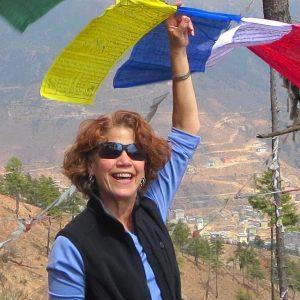
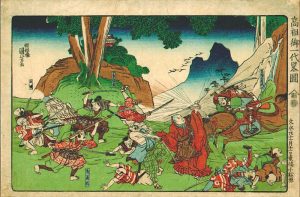


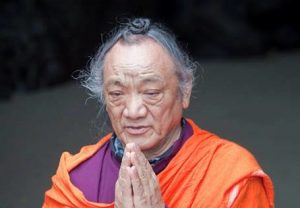


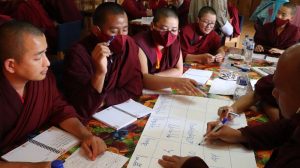
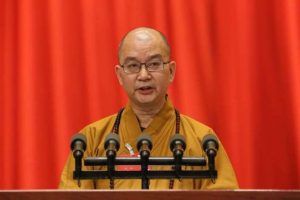


Wonderful and inspiring article, thank you! I was lucky to receive teachings from Lama Wangdu Rinpoche and will always remember his great generosity and kindness.
There was in fact another earlier traditional Tibetan cremation ceremony that took place in the west — that of Lama Thubten Yeshe, whose body was cremated at Vajrapani Institute in California on March 7, 1984 in the traditional manner under the instruction of Kyabje Zong Rinpoche. You can read a short account below; there are also recordings of the cremation ceremony on YouTube.
https://fpmt.org/mandala/archives/mandala-issues-for-2009/april/lama-yeshe-passes/
Thank you so much for sharing this precious history and the account of it.